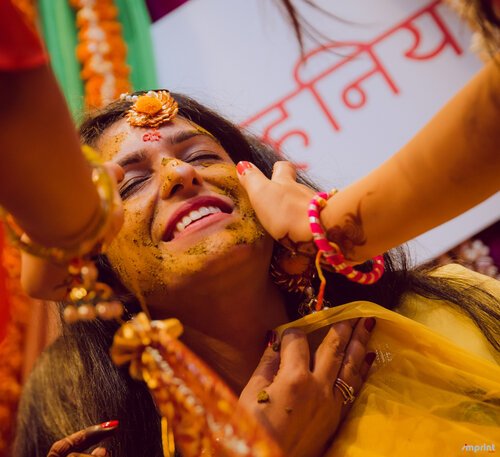

The Haldi ceremony marks the beginning of the wedding rituals and is a very important pre-wedding ritual. The paste is applied on the bride and groom’s skin before the ceremonial bath, to rid the couple of “Buri Nazar” the Sanskrit term for evil eye and also to shower the couple with blessings on their special day. The Haldi paste is prepared with turmeric (Haldi), sandalwood and is mixed with rose water/water or milk/curd. This mixture is applied to bless the couple and also make their skin glow. The application of Haldi is also accompanied by traditional songs and dances at times.
The ceremony originates in Hindu weddings when Lord Shiva and his bride Sati were applied with Haldi to cool the couple and make them look even more beautiful before their big day. It is known by different names in different regions like ubtan, mandha, tel baan, etc.
Turmeric is considered auspicious in Hindu rituals. It is also a significant ingredient in Indian cooking and adds flavour. Turmeric signifies purity, fertility and good health. It is very good for the skin and gives a healthy or divine glow for the bride and groom on the most important occasion of their lives. It detoxifies the skin and purifies the body symbolically. It also relaxes the mind and defuses tension. It has an antioxidant called curcumin that acts as a mild counter to anxiety and any pre-wedding jitters. Apart from this it also boosts immunity and soothes ailments. The bride and groom also apply this paste on their unmarried friends, cousins and siblings to help them get married soon.
The colour of Haldi is associated with Spring, happiness and new beginnings. In Hindu wedding rituals, yellow is the second most auspicious colour after red. One of the reasons for applying Haldi is to invite peace and prosperity for the bride and groom. In fact, many brides and grooms are asked to wear the colour yellow during this ceremony.
